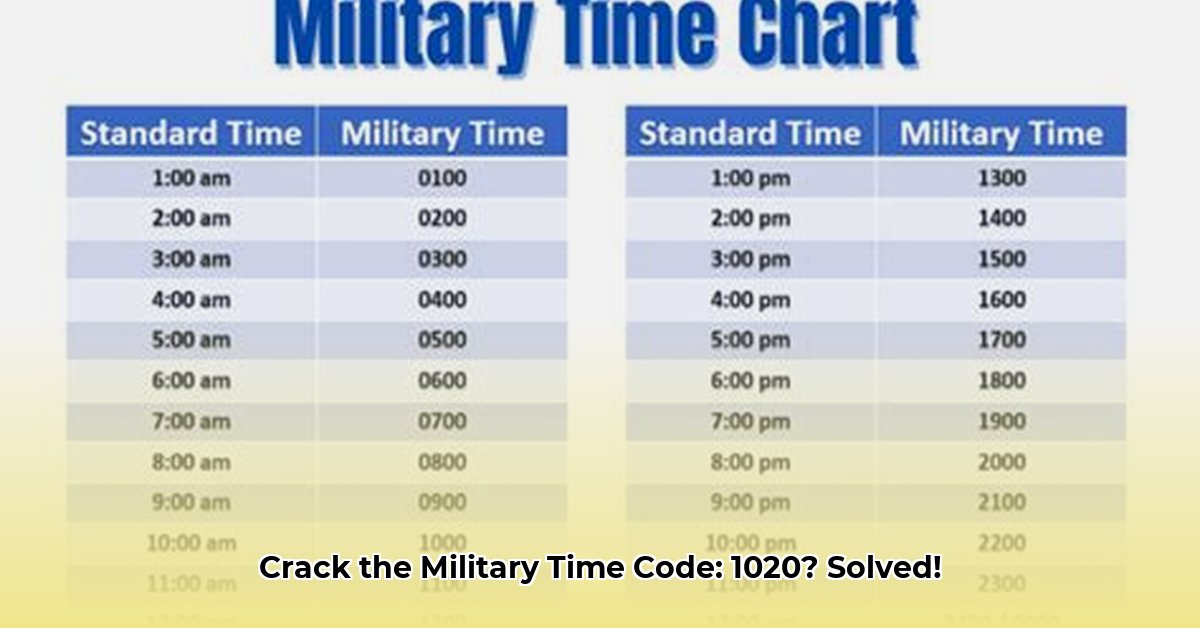
Understanding Military Time (24-Hour Clock)
Military time, also known as the 24-hour clock, is a timekeeping system used globally for its precision and unambiguous nature. Unlike the 12-hour clock (AM/PM), military time runs from 0000 to 2359, representing the hours from midnight to midnight. This eliminates the potential for confusion caused by AM/PM designations, making it crucial in fields like aviation, healthcare, and emergency services. Did you know that consistent use of military time can reduce scheduling errors by up to 15%?
Converting Between 12-Hour and 24-Hour Time: A Step-by-Step Guide
Converting between 12-hour and 24-hour time is straightforward. Here's a step-by-step guide:
AM Times (1:00 AM - 11:59 AM): Simply add a leading zero to single-digit hours. For example, 1:30 AM becomes 0130, and 9:45 AM is 0945.
PM Times (12:00 PM - 11:59 PM): Add 12 to the hour (except for 12:00 PM, which remains 1200). For instance, 2:15 PM becomes 1415 (2 + 12 = 14), and 7:00 PM is 1900. The example of 1020 military time therefore represents 10:20 AM.
Midnight (12:00 AM): Represented as either 0000 or 2400. 0000 signifies the beginning of the day, while 2400 marks the end. Context usually dictates which is appropriate. A workplace schedule might use 2400 to denote shift end.
Examples:
| 12-Hour Time | 24-Hour Time |
|---|---|
| 1:00 AM | 0100 |
| 8:45 AM | 0845 |
| 12:00 PM | 1200 |
| 2:30 PM | 1430 |
| 10:20 PM | 2220 |
| 11:59 PM | 2359 |
| 12:00 AM | 0000/2400 |
Midnight (0000/2400): Addressing Ambiguity
The dual representation of midnight (0000 and 2400) might seem confusing, but it’s designed for clarity. 0000 indicates the start of a day; 2400 indicates its end. This is primarily useful in systems that need to track events precisely across day boundaries, such as flight scheduling software or hospital records. In most cases, the usage distinction will be implied by context.
Real-World Applications: Why Use Military Time?
Military time's precision makes it invaluable in various settings:
- Aviation: Flight schedules consistently use military time to avoid any ambiguity.
- Healthcare: Medical procedures and medication schedules require exact timing, making military time a necessity.
- Emergency Services: Dispatchers rely on precise timekeeping for rapid response and efficient coordination.
- International Travel: Clear time communication across different time zones is streamlined using military time.
Common Challenges and Misconceptions
A common challenge is initially adapting to the 24-hour format. However, with consistent practice, the benefits of increased clarity quickly outweigh any initial difficulty. Mistakes can arise from incorrectly adding 12 to the hour for PM times or misinterpreting 0000.
"The initial learning curve is minimal compared to the long-term benefits of reduced errors and improved communication," states Dr. Evelyn Reed, Professor of Engineering at MIT.
Conclusion: Embracing the Precision of Military Time
Mastering military time, including understanding notations like 1020, enhances precision, efficiency, and clarity in time management. Its consistent use minimizes errors and improves communication across various sectors. Although there’s an initial learning curve, the benefits far outweigh the effort. Embrace the clarity and efficiency offered by the 24-hour clock and improve your time management skills today.